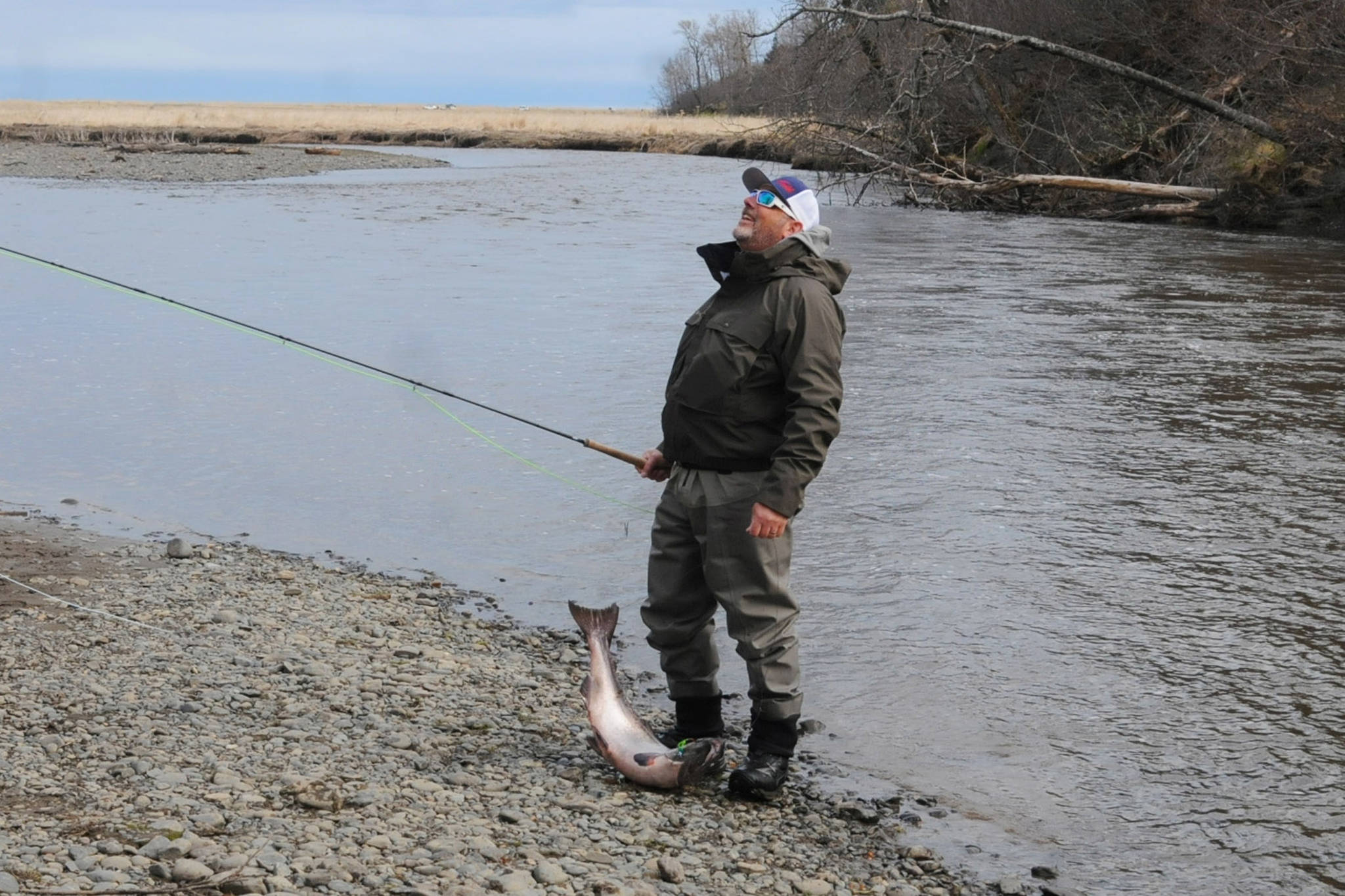Anglers looking to catch salmon on the Kenai Peninsula this summer will face a mixed bag, with a low king salmon forecast but an optimistic sockeye forecast from the Alaska Department of Fish and Game.
Those hoping to catch a king salmon this summer will face tighter regulations as the department forecasts a below average year. If projections are realized, this year’s run would rank as the fourth lowest across 34 years.
The department released both the early- and late-run predictions for king salmon in February and called for a below average early run and a well below average late run for large fish, or king salmon equal to or larger than 34 inches in length, with 3,168 large fish in the early run and 21,746 large fish in the late run for 2019.
This year’s Kenai River outlook is more conservative than 2018’s, which forecasted about 5,499 large fish in the early run, with an approximate actual total run of 3,072 fish, a difference of 44 percent, or 2,400 fewer fish. The department forecasted about 21,503 large fish for the late run, but the Kenai River saw 20 percent fewer fish with a total of about 17,571 large fish.
The department has already responded to the poor outlook, restricting Kenai River early-run king salmon to catch and release only in hopes of protecting returning king salmon and ensuring fishing opportunities in the future.
Restrictions in the Kenai River drainage downstream of the Skilak Lake outlet will run from May 1 to July 31.
From May 1 to June 30, no king salmon of any size can be retained from the mouth of the Kenai River upstream to the outlet of Skilak Lake.
Starting July 1, anglers will be able to retain king salmon from the mouth of the Kenai River up to a Fish & Game marker located about 300 yards downstream from Slikok Creek. Anglers may also use bait in this section, but only on a single hook lure or fly. Fishing will remain catch and release from the marker up to the Skilak Lake outlet.
“In an effort to protect our king salmon fishery resources, which are important to anglers and our fishery managers, and ensure our fishery management is consistent with the regulatory management plan, the early king salmon run on the Kenai River is restricted to non-retention in an effort to meet our 2019 early-run escapement goal,” stated Area Management Biologist Colton Lipka. “Anglers have noticed that the Kenai River king salmon and other king salmon stocks throughout Cook Inlet are experiencing an extended period of low productivity and restricting the fishery preseason is warranted.”
The department is more optimistic with the sockeye return.
After a disappointing 2018 return, Fish and Game is forecasted 6 million sockeye through the Upper Cook Inlet, with a range of about 4.8 million to 7.3 million for the total sockeye run. Escapement is forecasted at 2 million while Upper Cook Inlet commercial harvest is estimated at 3 million and other harvest at 1 million.
The Kenai River is forecasted to see 200,000 more fish than the 20-year average, according to Fish and Game’s release, with a run forecast of approximately 3.8 million sockeye salmon. Fish and Game puts the forecast at a range of 3.1 to 4.5 million. The 20-year average is 3.6 million.
The forecast isn’t a guarantee, though, and last year’s sockeye run proved the unpredictability of the sockeye’s return.
Last year, the estimated total run was 3.1 million, 1.5 million fish below the mid-point forecast of 4.6 million. The estimated run to the Kenai River totaled 1.7 million. The Kasilof River saw about 697,000 fish, the Susitna saw 250,000 and Fish Creek saw 106,000.
The commercial harvest in 2019 is also forecasted 200,000 above the 20-year average. In 2018, the commercial harvest in Upper Cook Inlet of 800,000 was 1.1 million less than the forecasted 1.9 million.

